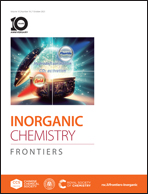Ultrafine Ni12P5 nanoparticle-embedded carbon with abundant catalytic activity sites as separator modifiers in high-performance lithium–sulfur batteries†
Abstract
The further development of lithium–sulfur (Li–S) batteries suffers from the notorious shuttle effect and sluggish reaction kinetics. Herein, ultrafine Ni12P5 nanoparticle-embedded carbon nanospheres (uNi12P5/C NSs) were used as modifiers for commercial separators to inhibit the diffusion of polysulfides. The uNi12P5/C//PP modified separator not only effectively traps polysulfides by polar interaction and enhances the kinetic conversion of lithium polysulfides but also provides strong physical confinement. As a result, the cell with uNi12P5/C//PP modified separators shows excellent cycling stability (708.6 mA h g−1 at 1.0C after 500 cycles with an ultralow capacity decay of 0.048% per cycle) and glorious rate performance (618.4 mA h g−1 at 5.0C). In addition, even under a high sulfur mass loading of 4.5 mg cm−2, the cell also has an outstanding capacity retention rate of 96.1% after 100 cycles at 0.2C. This work could accelerate the application of phosphides in the separator modification of Li–S batteries.



 Please wait while we load your content...
Please wait while we load your content...